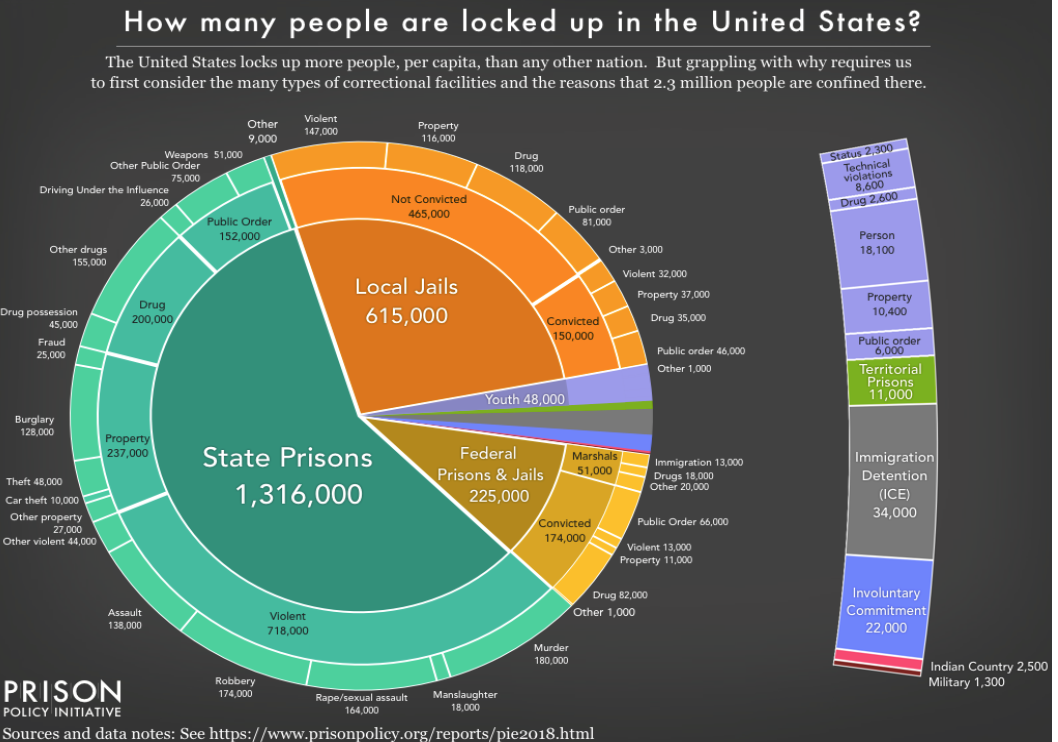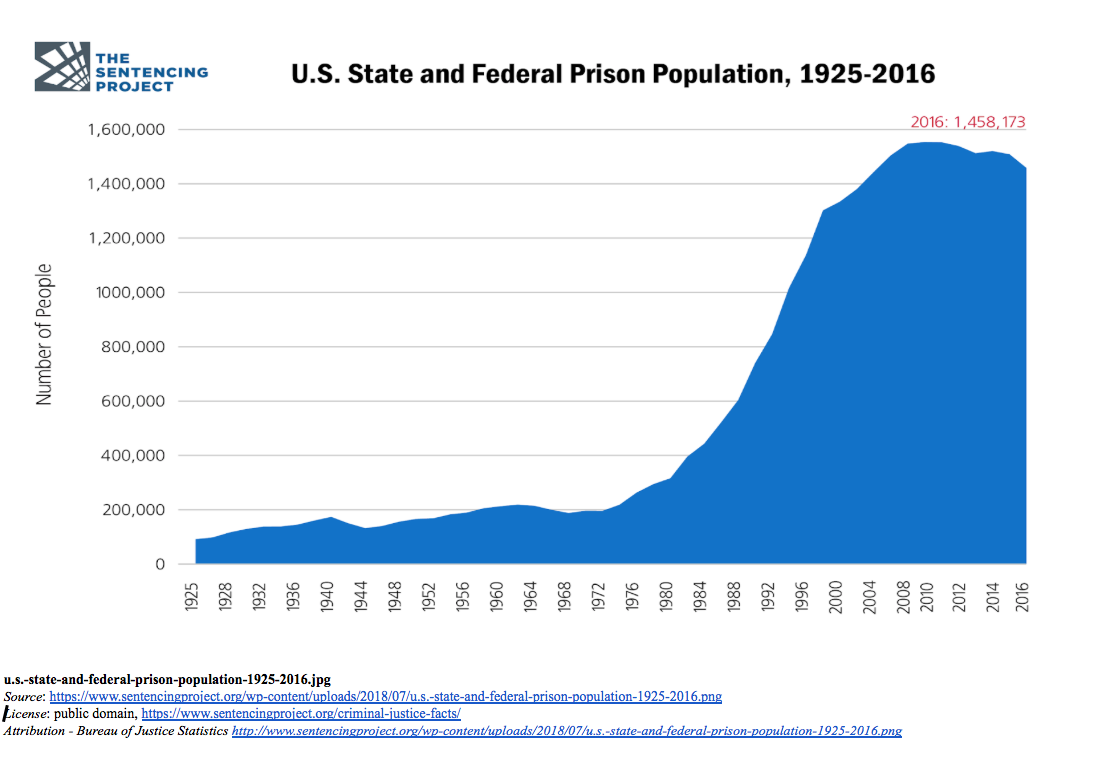David Carter
The types of people that end up in prison are quite different than individuals that go to jail. Almost all people that go to prisons in the United States are people that have been convicted of felony-level crimes and will be serving more than a year (or they could have multiple years on their jail sentence). To give you a more detailed depiction of this, see the image below.
People Incarcerated in the U.S.

Focusing in on the left side of the graphic, there are roughly 1,316,000 State Prisoners. Here we can see the types of crimes that they are convicted of. A little over half (54-55%) are incarcerated for violent crimes. Drug crimes and property crimes make up the next big sections for the state prisoners. When you add in the federal prisoners (about 180,000) and the private sector prisoners (another 150,000+), territorial prisoners (11,000), Indian Country prisoners (2,500), we start to see how that number changes to about 1,700,000 prisoners.
One of the more notable items here, and what is different from the jails, roughly 93% of the prisoners are male. In jail, that number is roughly 85% male. While the total volume of prisoners has dropped slightly in the last few years (since 2015), this following graphic shows that we have increased our number substantially over the last 45 years.

This growth of the prison population will be discussed in greater detail in the final section on corrections, Special Issues. However, in the next section, we will discuss where the largest volume of individuals under correctional control resides, probation and community corrections.

